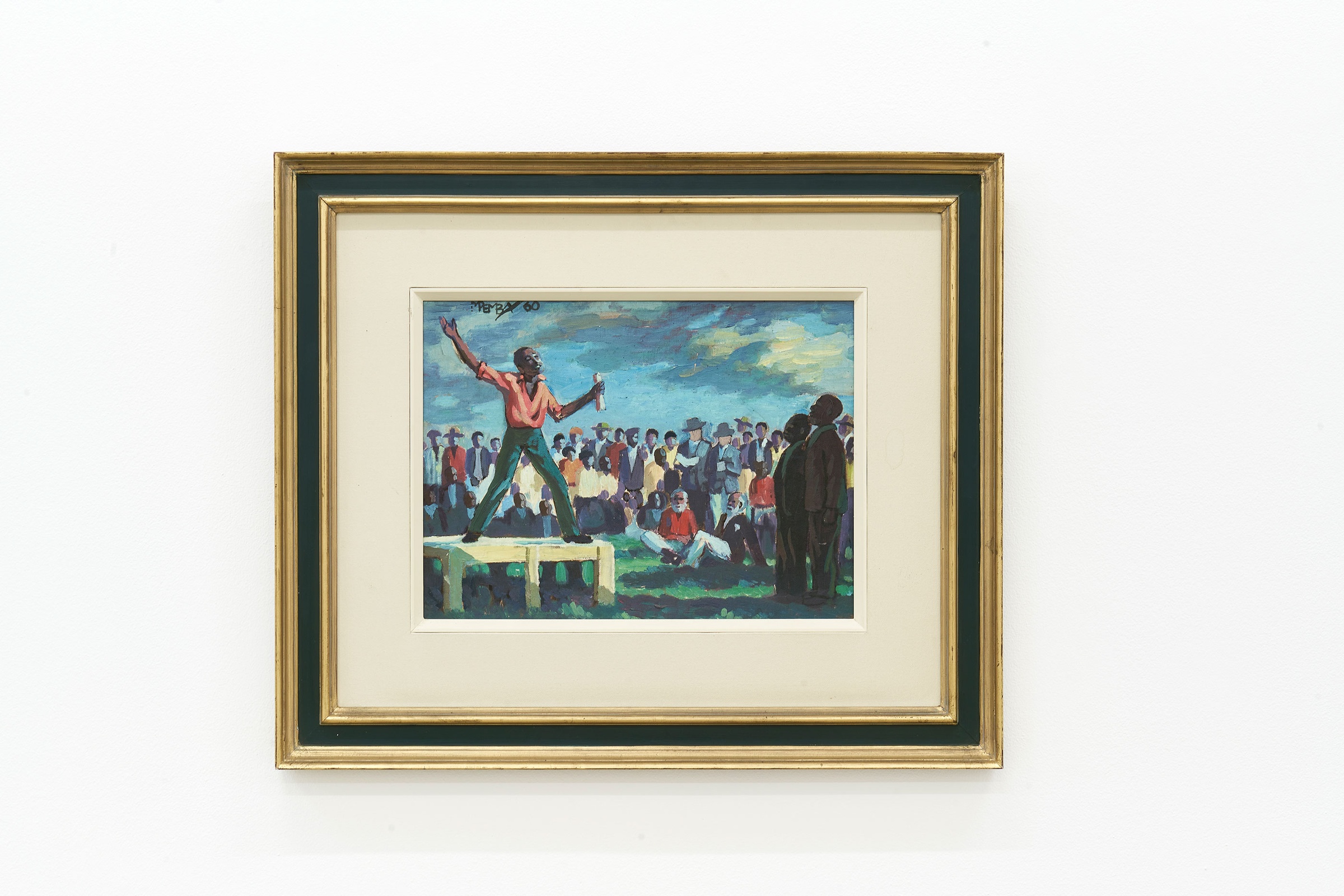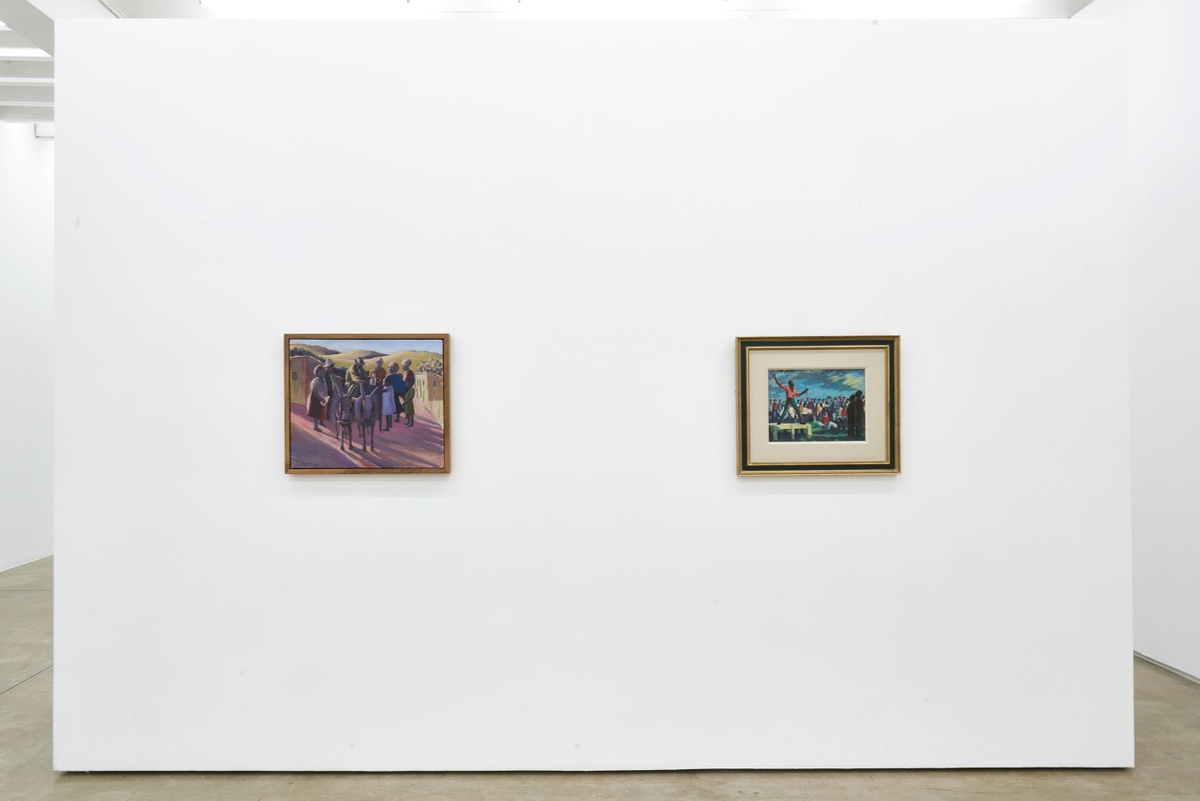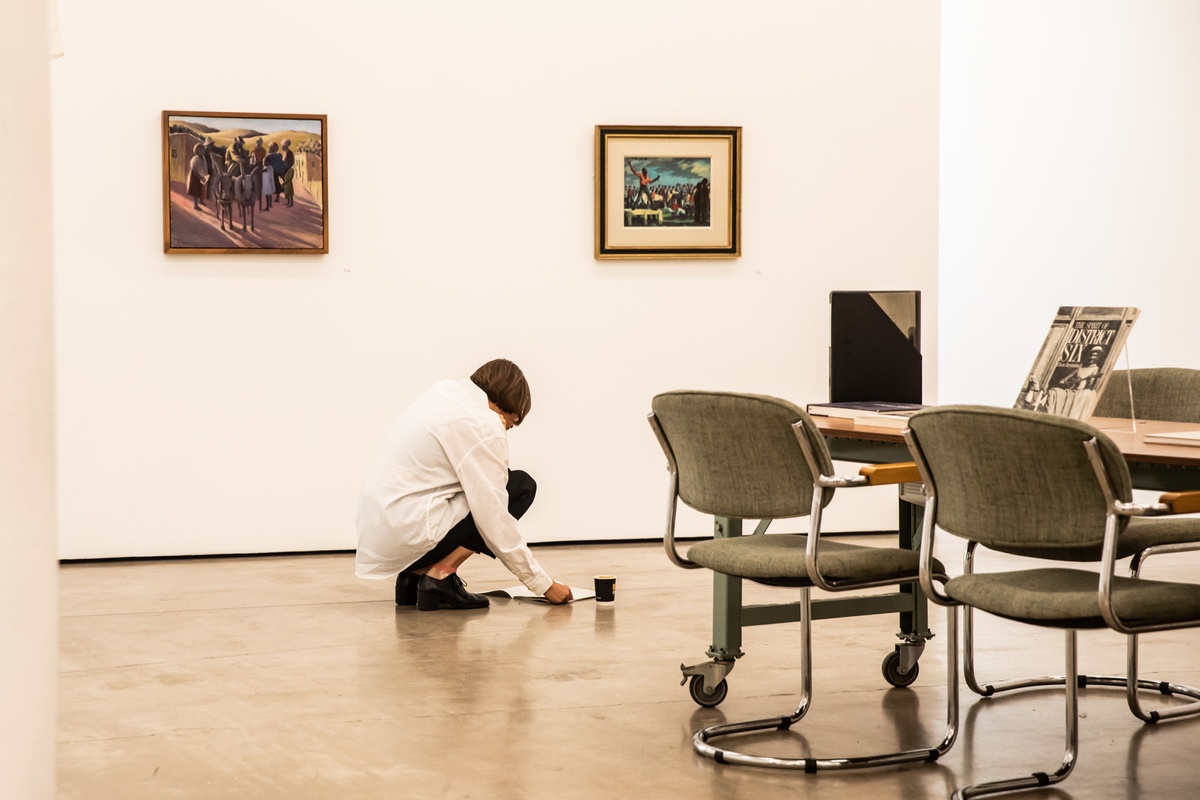George Pemba
Throughout his career, Pemba favoured scenes populated by crowds – weddings, funerals, protests, children at play, packed train carriages and hospital waiting rooms, urban shebeens and township streets. Viewed in the context of the exhibition Common at A4, such gatherings become metaphors for social collectivism and community organisation. In The Agitator (1960), the artist describes a political rally. The title, one presumes, is cynical – any person of colour with popular appeal necessarily suspect to the apartheid regime. To this, a pair of white security police stand among the gathered onlookers, watching the impassioned figure on his makeshift stage. The painting is at once an expression of shared faith and solidarity, and a warning against political aspirations under white-minority rule.
b.1912, Gqeberha; d.2001, Motherwell
“I have almost throughout my life,” George Pemba wrote in an undated journal entry, “been in the wilderness.” Like his contemporary Ernest Mancoba, Pemba went largely unrecognised as an artist in his lifetime; his paintings passed over as ‘township art’. He persisted despite his relative obscurity, persisted even in times of great personal hardship. Many black South African artists of his generation left for Europe, among them Pemba’s friend Gerald Sekoto. Such a journey, however, was beyond Pemba’s means. Instead, he stayed and witnessed in paint the country’s transition to high apartheid and then to freedom. His paintings, the artist insisted, were never political but rather studies in life’s minutiae. But then politics had a way of staining all life under apartheid, of colouring even those scenes which first appear innocent. History has since turned to Pemba’s paintings to understand something of those times, to gain insight into the lives of ordinary people under the regime’s oppression. Recognition has posthumously granted Pemba pride of place in the South African canon. He is remembered as a pioneer of South African social realism and is counted among the country’s most influential artists. “I have to thank myself,” Pemba said in an address given in 1991, “for holding on with the hope that one day the sun will also shine on me.”


